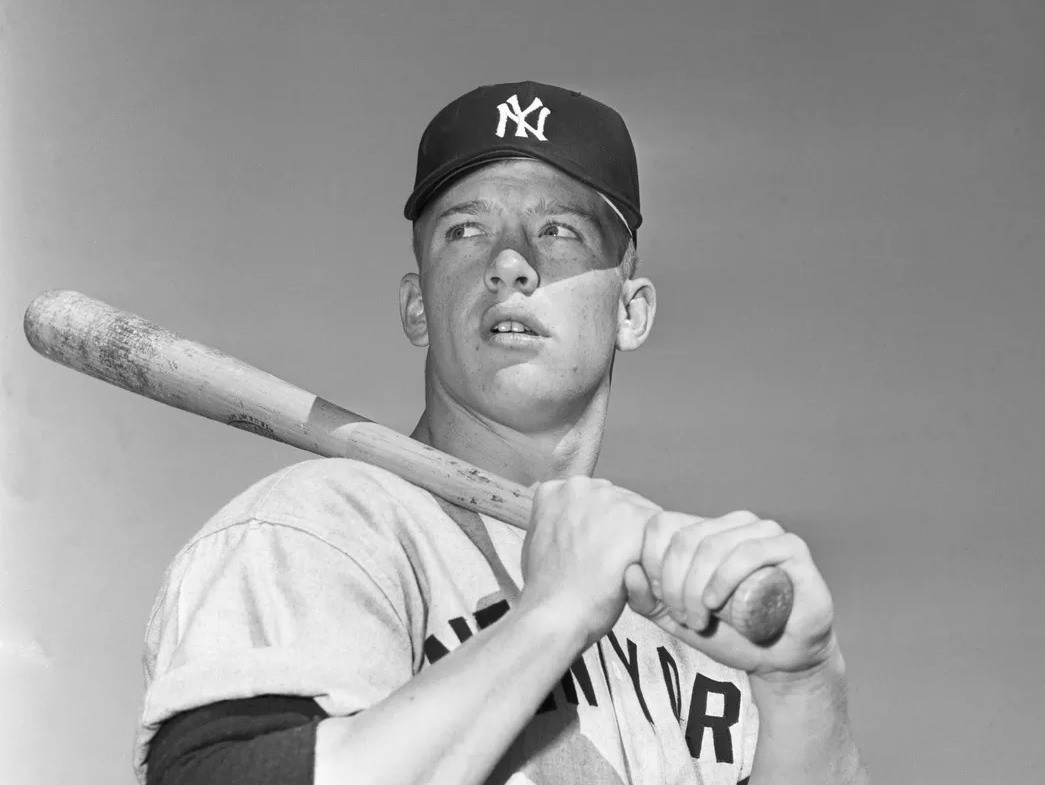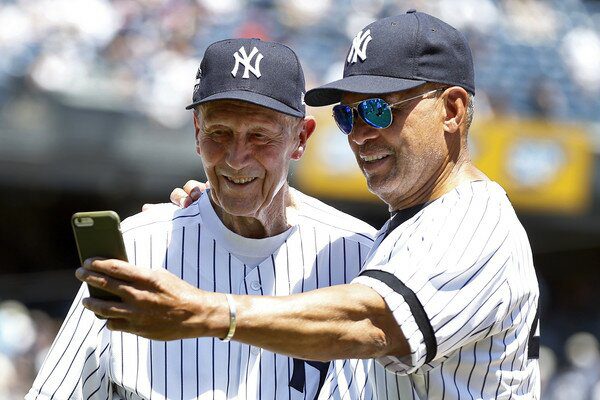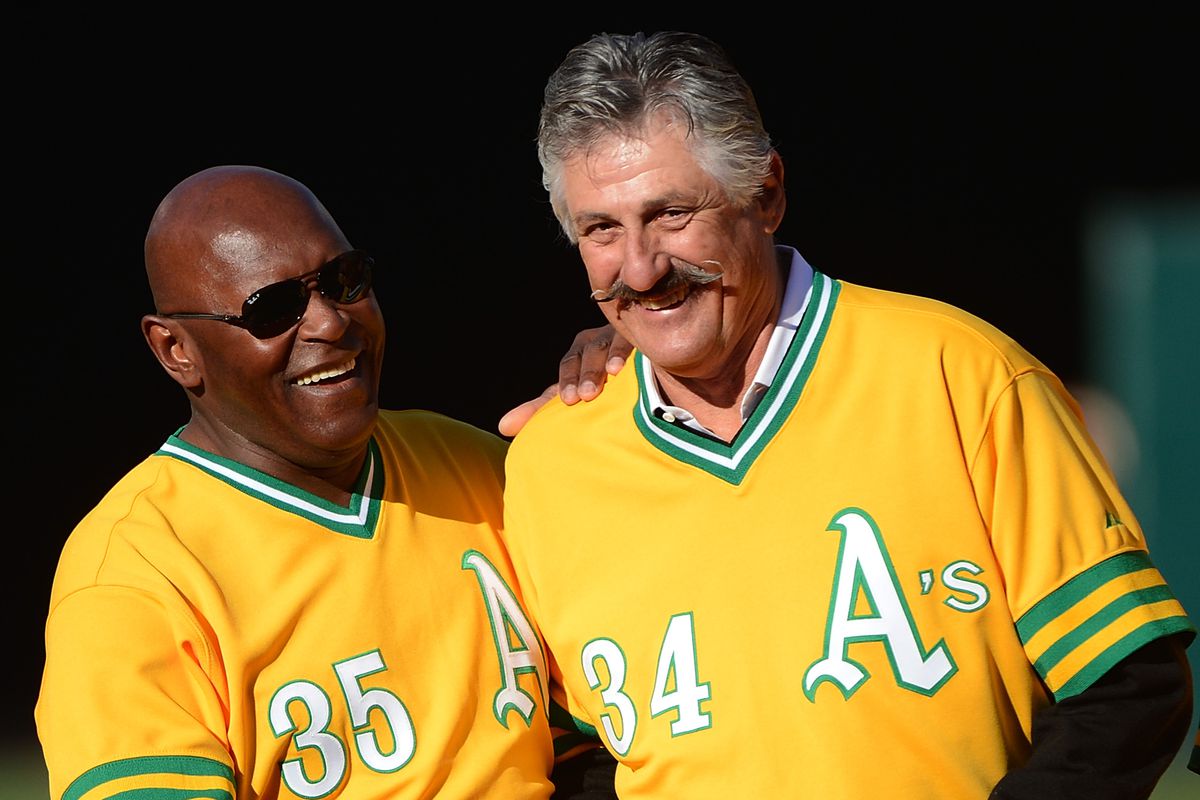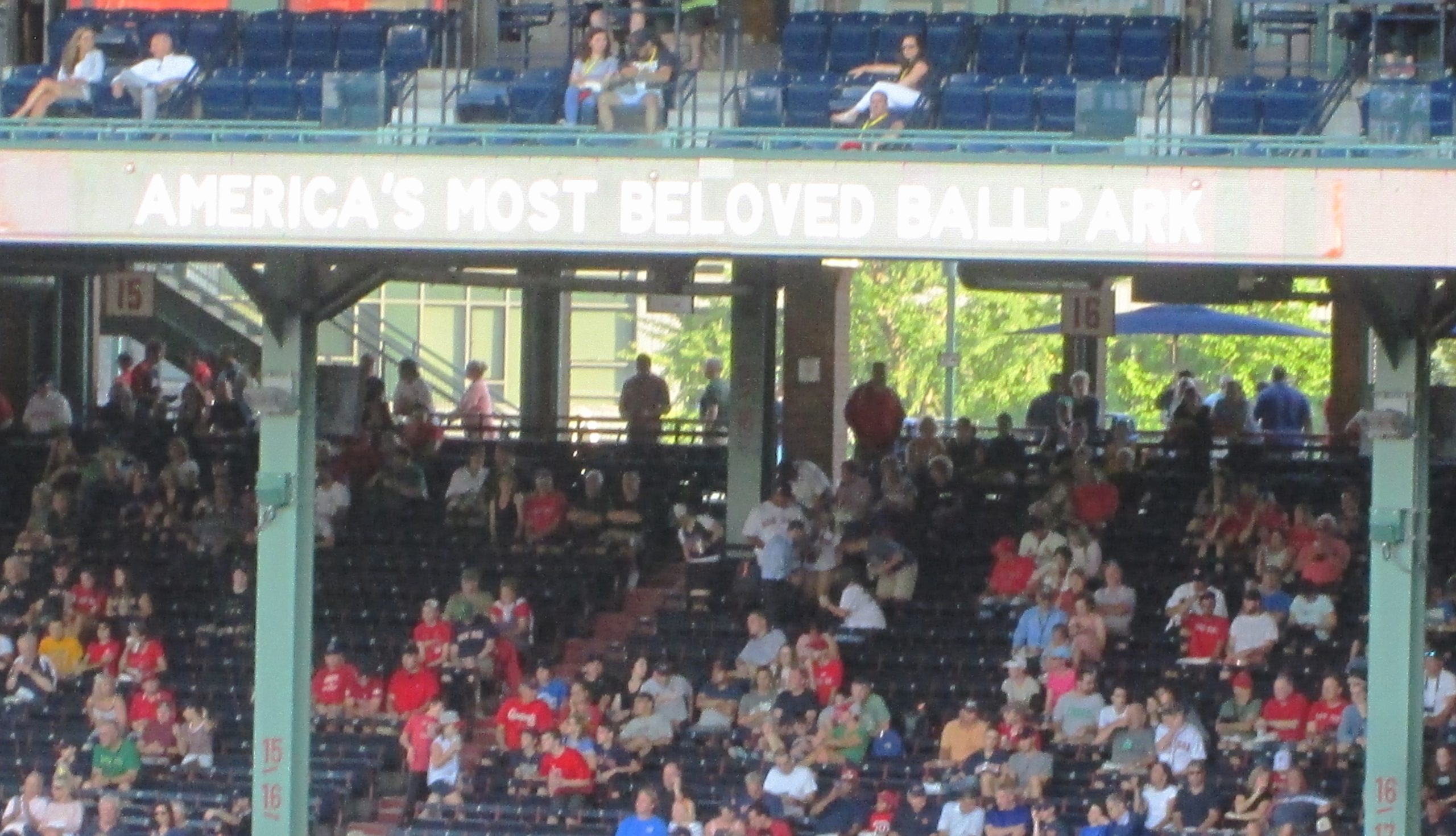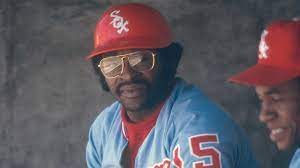Mickey Mantle is the greatest switch hitter of all time.
One of the most beloved figures in baseball history, Mickey Mantle may be the most iconic Yankee ever. He played 18 major league seasons – all in New York – and was a true American hero. Mantle had immense talent. He clouted Herculean homers, ran like a deer, and patrolled center field on baseball’s biggest stage, Yankee Stadium. “He has more speed than any slugger I’ve seen, and more slug than any other speedster,” said Yankees manager Casey Stengel , upon seeing Mantle when he broke into the big leagues as a teenager. “This kid ain’t logical. He’s too good. It’s very confusing.” No player’s home runs generated more stories, controversy, myth and legend than The Mick’s. After hitting a 565-foot blast completely out of Washington’s Griffith Stadium in 1953, the term Tape Measure Shot was coined. Mantle’s bombs were legendary. In 1960, he hit a ball over the roof of Tiger Stadium that traveled an estimated 643 feet. Mantle three times hit balls off the third-deck façade at old Yankee Stadium. At the time of his retirement in 1969, he had hit 536 home runs, then-third on the all-time list.
For men of a certain age, The Mick was their boyhood hero. At a time when playing baseball was all that little boys wanted to do, finding a Mickey Mantle baseball card was that one card — the card of cards. He was baseball’s best player on the game’s best team. With the emergence of television in the 1950s, the Yankees were Saturday afternoon Game of the Week regulars and played in seemingly every World Series. A three-time AL MVP, Mantle led the Bronx Bombers to a dozen World Series, winning seven. Mantle became synonymous with the Fall Classic. He set Series records that will likely never be broken, including most home runs [18], RBI [40], extra-base hits [26], runs [42], walks [43] and total bases [123].
Mantle was “A superstar who never acted like one,” said good friend and longtime teammate Whitey Ford, who went into the Hall of Fame on the same day as The Mick in 1974. “He was a humble man who was kind and friendly to all his teammates, even the rawest rookie. He was idolized by all the other ballplayers.” Arguably the greatest offensive threat of any center fielder in baseball history, Mantle had the highest on-base slugging percentage [a sabermetric that measures the ability of a player to both get on base and to hit for power] and highest stolen-base percentage of any centerfielder ever to play the game.
Baseball’s “Five Tools” include the ability to hit for power, hit for average, run, field and throw. Mickey Mantle was the consummate five tool player. He hit .300 or better ten times and won a Gold Glove. Playing the game’s most demanding outfield position, Mantle had a career fielding percentage of 0.984. One of the greatest clutch hitters ever, Mantle hit 13 walk-off home runs, tying him with Jim Thome for most of all time. Playing on virtually one leg for most of his career, The “Commerce Comet” stole 153 bases. At the time of his retirement, he was the Yankees all-time leader in games played, a mark later broken by Derek Jeter, in 2011.
Born in Spavinaw, Oklahoma, October 20, 1931, Mickey Charles Mantle moved with his family to nearby Commerce at four. His father “Mutt” was a baseball fanatic and former semipro player who named him after Mickey Cochrane, a hall of fame catcher for the A’s and Tigers. When not working in the zinc mines of Oklahoma, Mutt taught his son the game of baseball, demanding that he learn to hit from both sides of the plate. “Dad would pitch to me right-handed and I would hit lefty,” recalled Mantle. “Grandpa would pitch to me lefty and I’d bat righty. That’s how I learned to switch hit.” At 14, Mantle suffered a football injury to his leg that led to osteomyelitis. Doctors wanted to amputate, but Mantle’s parents sought a second opinion. He was treated at the Crippled Children’s Hospital in Oklahoma City, where doctors injected him with a new “miracle” drug – Penicillin – eight times a day. Within a week, swelling in the ankle had dissipated.
Mantle was discovered by a New York Yankees scout while still in high school . Upon graduation in 1949, he was signed to a minor league contract for $ 140 per month with a $ 1,500 bonus. A shortstop, he rose from the Class D Independence League to the Class-C Western Association, where he led the league in hitting. By 1951, he had become the Yankees starting right fielder. He helped New York to its fourth World Series in five years when, in Game Two, he stepped on a drain pipe while running to catch a fly ball hit by rookie Willie Mays. Mantle went down “like he’d been shot” and severely injured his right knee. He played the rest of his career in severe pain with a torn ACL. The following season, Mantle replaced Joe DiMaggio, who had retired following a Yankees victory in the 1951 World Series, in center field.
Perhaps the most anticipated young prospect in baseball history, Mantle arrived in New York to enormous expectations. “He’s the greatest prospect I’ve seen in my time, and I go back quite a ways,” said Bill Dickey, an 11-time All-Star catcher who won 14 World Series as a Yankee. Upon arrival, Mantle was assigned uniform number 6, expected to follow Babe Ruth [#3], Lou Gehrig [#4] and Joe DiMaggio [#5] as the next great Yankee star. After slumping early in his rookie year, Mantle was sent down to the Yankees’ farm team in Kansas City, where his slump continued. Frustrated, the teenager called his father, telling him, “I don’t think I can play baseball anymore.” Mutt Mantle immediately drove to Kansas City, where he started packing his son’s clothes. “I thought I raised a man,” the elder Mantle told his son. “I see I raised a coward instead. You can come back to Oklahoma and work the mines with me.” Mantle changed his mind, broke out of his slump and returned to the Yankees, where he was assigned uniform number 7.
Mantle had a breakout season in 1956, leading the league in batting [.353], home runs [52] and RBI [130] to capture both the Triple Crown and the MVP Awards. He remains the only player to win a Triple Crown as a switch hitter. Mantle repeated as AL MVP in 1957. In 1961, he and teammate Roger Maris, known as the M&M Boys, chased the most hallowed single-season record in baseball – Babe Ruth’s 60 home runs, set in 1927. Mantle had flirted with the record during his Triple Crown season five years earlier, and was on pace to catch The Babe when he was unexpectedly hospitalized by an abscessed hip he got from a flu shot late in the season. Mantle finished with a career-best 54 dingers, while Maris bettered Ruth when he blasted his 61st homer on the final day of the 1961 season.
Despite missing 40 games in 1962 due to injury, the 30-year-old Mantle won the third and final MVP Award of his career after hitting .321 with 30 homers and 89 runs batted in. He earned a Gold Glove and led the Bronx Bombers to their second straight World Series title – the last of his legendary career. By the time Mantle hit his 500th career home run in May 1967, chronic leg injuries had relegated him to first base. When The Mick retired in 1968, both he and the Yankees were mere shadows of their former selves.
The injuries he suffered, and the lifestyle he led off the field, never allowed Mantle to live up to the potential he displayed in 1951. The knee injury he suffered in the ’51 Series prevented him from ever playing his best again. Toward the end of his career, merely swinging a bat would cause Mantle to collapse in agony. The Mick played in 20 All-Star Games, led the Yankees to six pennants in his first seven seasons, and led the AL in homers four times. More than a generational player, Mantle was a once-in-a-lifetime talent that calls to mind Mike Trout, a slugging speedster who currently roams center field for the Anaheim Angels. Like Mantle, Trout is a five-tool guy and the best player in baseball. Perhaps the most revered Yankee of all time, Mantle retired following the 1968 season. New York retired his Number 7 and honored Mantle with a bronze plaque in Monument Park. In 1999, he was elected to MLB’s All –Century Team.
After nearly 40 years of excessive drinking, Mantle entered the Betty Ford Clinic in January 1994. He never drank again, but suffered cirrhosis of the liver, hepatitis C and inoperable liver cancer. Mr. Mantle received a liver transplant in June 1995 but died two months later, at 63.
Today marks the anniversary of two significant events in the career of Mickey Mantle, and both occurred in Detroit. In 1952, he hit the first grand slam of his career. Batting from the right side off Tigers left-hander Ted Gray, he hit his 15th homer of the season at Briggs Stadium. On this date in 1957, Mantle hit career home run number 200. With one out in the ninth, he hit an opposite- field shot into the left field bleachers off right-hander Jim Bunning in a 3-2 loss. It was Mantle’s 27th dinger of the season, tying him with Ted Williams for the AL lead.
— Casey Stengel, of a young Mickey Mantle

